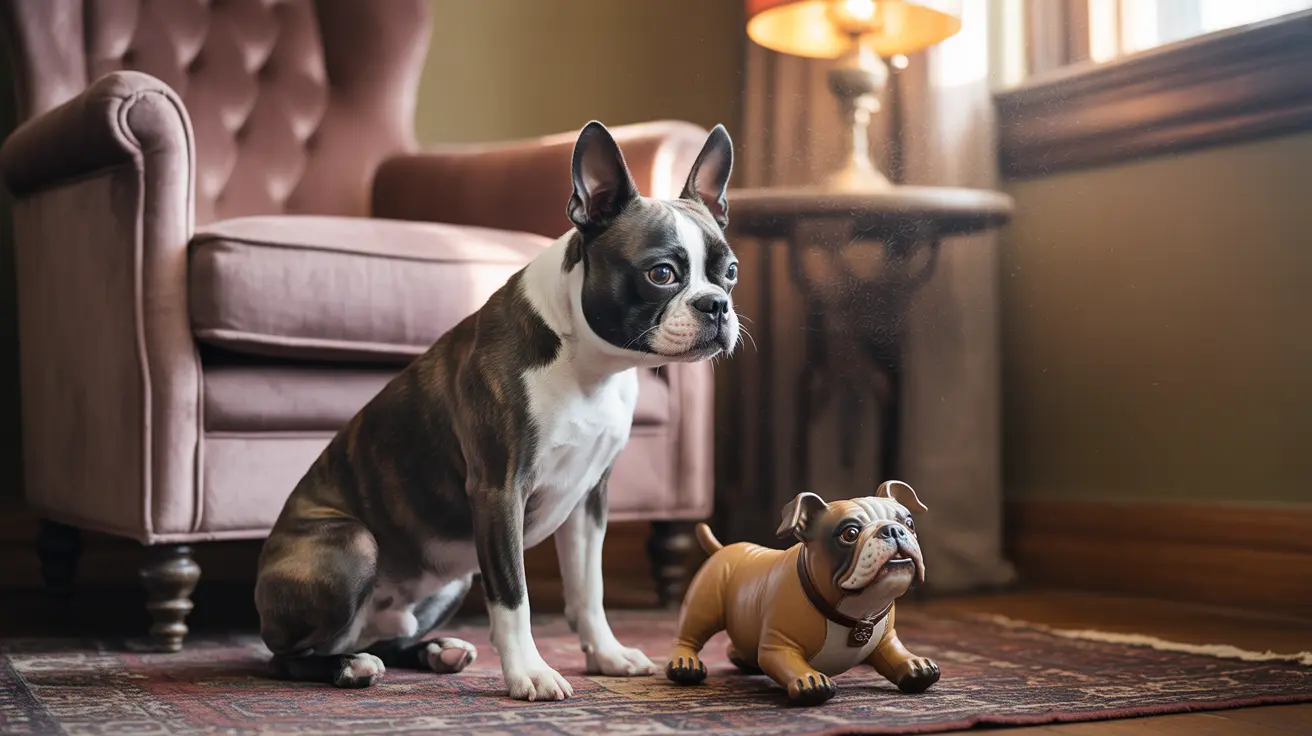Introduction
Many dog lovers wonder what Boston Terriers were bred for, and the answer reveals a fascinating transformation in canine history. These distinctive black-and-white dogs, known today for their gentle temperament and tuxedo-like markings, actually began their journey as fighting dogs in late 19th century Boston, Massachusetts. Through careful breeding and changing social values, they evolved from fierce fighters into one of America's most beloved companion breeds.
The Fighting Dog Origins
Boston Terriers were originally bred for dog fighting, a common but controversial sport in 1870s America. The breed's foundation began with a dog named "Hooper's Judge," purchased by Robert C. Hooper in Boston. This bull and terrier type dog was bred with a white bulldog-type female named Burnett's Gyp, creating the foundation for what would become the Boston Terrier breed.
The early Boston Terriers were significantly different from today's specimens. They were heavier, weighing up to 44 pounds, and possessed a more aggressive temperament inherited from their bulldog and terrier ancestors. These early dogs were bred specifically for their strength, agility, and fighting ability.
The Transformation to Companion Dogs
As public sentiment turned against dog fighting in the late 19th century, breeders began selecting for different traits. They focused on creating smaller, gentler dogs better suited to companionship. This intentional breeding resulted in significant changes to both the physical appearance and temperament of Boston Terriers.
The breed's evolution was remarkably successful. By the early 1900s, Boston Terriers had transformed from fighting dogs into refined pets, particularly popular among urban dwellers and the middle class. Their manageable size, friendly disposition, and distinctive appearance made them ideal apartment dogs and family companions.
Recognition and Standardization
The Boston Terrier achieved official recognition from the American Kennel Club in 1893, becoming the first American dog breed to receive such honors. The Boston Terrier Club of America, established in 1891, played a crucial role in standardizing the breed's appearance and temperament.
Today's breed standard calls for dogs weighing between 15-25 pounds, with the distinctive black and white coat pattern that earned them the nickname "American Gentleman." Their short, smooth coat, compact build, and friendly expression have become hallmark characteristics of the breed.
Modern Boston Terrier Characteristics
Modern Boston Terriers bear little resemblance to their fighting ancestors. They are known for their:
- Friendly and affectionate nature
- Intelligence and trainability
- Excellent companionship qualities
- Adaptability to various living situations
- Good relationship with children and other pets
Legacy and Cultural Impact
Boston Terriers hold a special place in American dog culture. They became Massachusetts' official state dog in 1979 and serve as the mascot for Boston University. Their journey from fighting dogs to beloved companions represents one of the most successful breed transformations in canine history.
Frequently Asked Questions
What were Boston Terriers originally bred for, and how did their purpose change over time?
Boston Terriers were originally bred for dog fighting in the 1870s. However, as dog fighting became socially unacceptable, breeders deliberately transformed them into companion dogs by selecting for smaller size and gentler temperament.
How did crossing Bulldogs with English Terriers lead to the Boston Terrier breed?
The initial crossing of English Bulldogs with white English Terriers (now extinct) created dogs with the strength of bulldogs and the agility of terriers. Through selective breeding, these traits were refined to create the modern Boston Terrier.
Why are Boston Terriers called the "American Gentleman" and what makes their temperament unique?
The nickname "American Gentleman" comes from their tuxedo-like markings and refined temperament. Their unique personality combines intelligence, gentleness, and adaptability, making them excellent companion dogs.
How did Boston Terriers transition from fighting dogs to popular companion pets?
The transition occurred through intentional breeding in the late 19th century, selecting for smaller size, friendlier temperament, and more appealing physical characteristics. This change coincided with shifting social values away from dog fighting.
What are the key physical traits that distinguish Boston Terriers today from their fighting dog ancestors?
Modern Boston Terriers are much smaller (15-25 pounds vs. up to 44 pounds), have a more refined build, and display the distinctive black and white markings. They also have a shorter muzzle and more compact body than their fighting ancestors.






